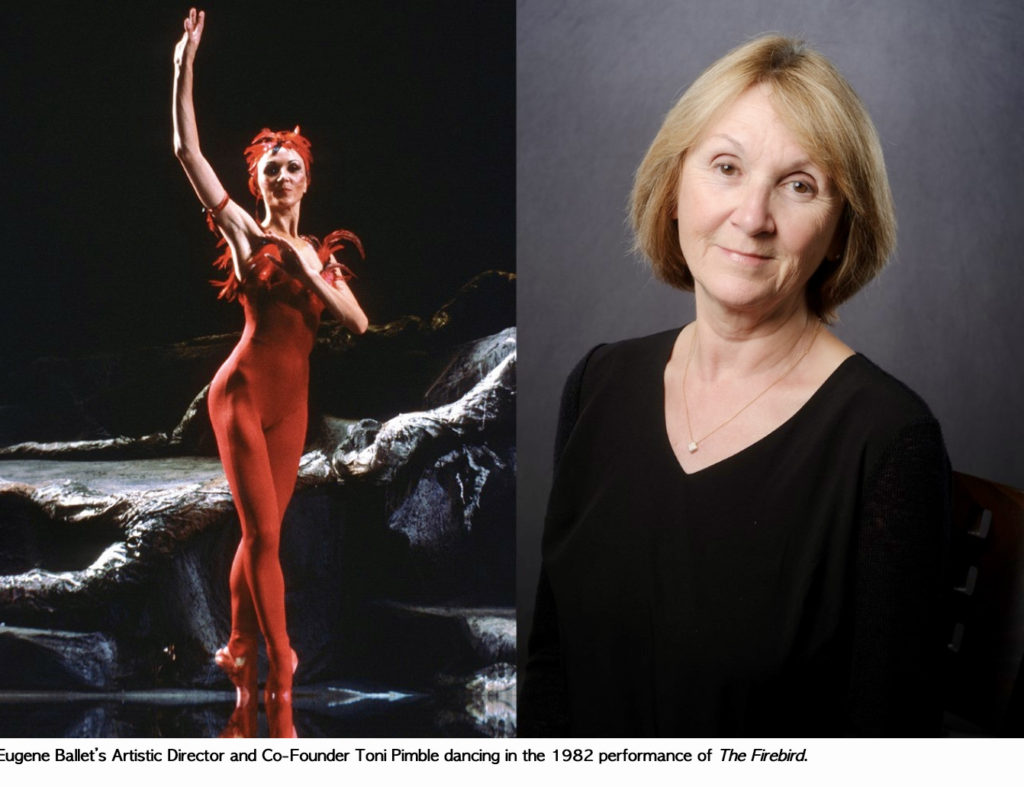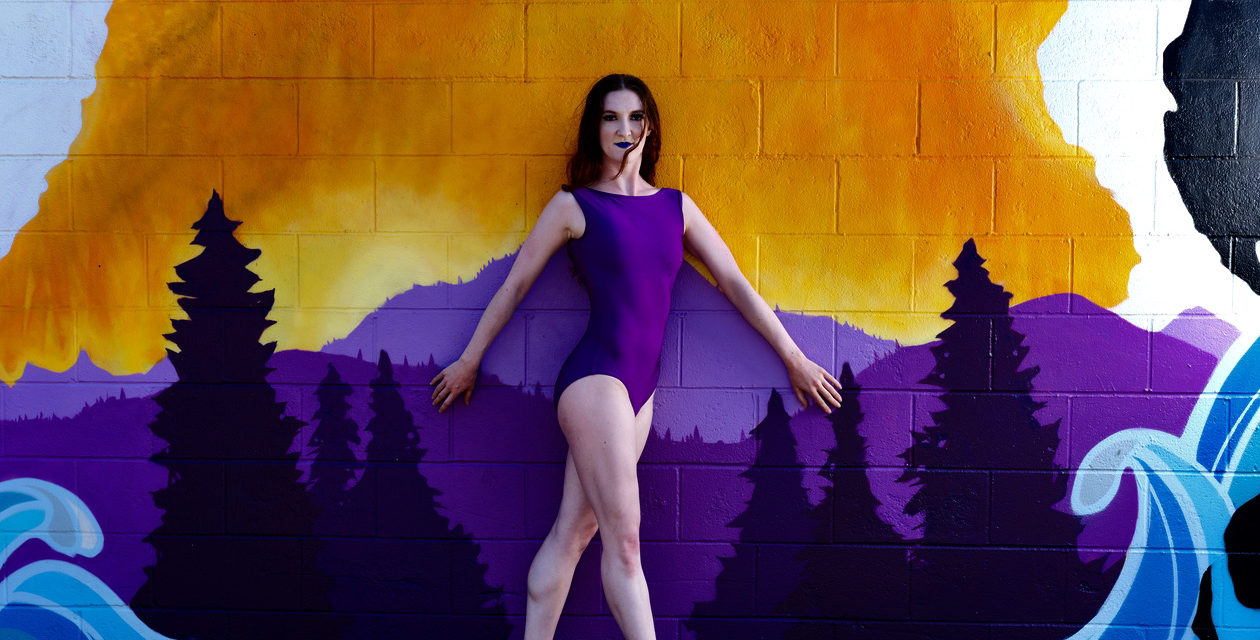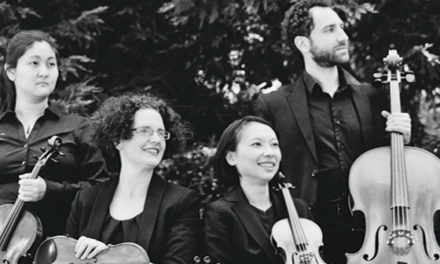(Scene from Eugene Ballet’s Celebration of the Uncommon Woman; photo by Ari Denison)
By Randi Bjornstad
Toni Pimble, Eugene Ballet’s artistic director, first created her Celebration of the Uncommon Woman in 1992, as a shout-out to women making their way in the male-dominated arenas of musical composition and dance choreography.
The original Celebration took place at the Hult Center for the Performing Arts, with then-Eugene Symphony conductor and music director Marin Alsop on the podium.
Pimble remembered it as “a challenging undertaking” in a news release about the 2022 version of the same Celebration. Thirty years later, Pimble said, female choreographers still struggle for recognition and performance of their work, especially in ballet.
Now, Pimble, who has choreographed and produced many of own original ballets, is putting on another show that includes her own choreography as well as that of Eugene Ballet’s resident choreographer Suzanne Haag and three guest women choreographers: Sabrina Madison-Cannon, professor of dance at the University of Oregon; Penny Saunders, resident choreographer at the Grand Rapids Ballet in Michigan; and Nicole Haskins, Ballet Idaho’s trainee program director.
Their work will be performed at the Hult Center on the evening of Feb. 12 and at a matinee on Feb. 13.
According to Haag, Pimble’s role at Eugene Ballet is the longest of any woman dance director in the United States, and “something uncommon and to be very much celebrated.”
In fact, Haag said in the announcement of the performances, “An online resource that tracks the hopeful increase and changes in female leadership in the dance world — and specifically ballet — recently found that there were only six female resident choreographers in the entire nation. “We’re proud to be able to feature two of the six on this program,” she said.
Women orchestra conductors likewise have been few and far between. For her part, Alsop retired in 2021 from her 14-year tenure as conductor of the Baltimore Symphony Orchestra. But as recently as five years ago, just under 15 percent of orchestra conductors at levels, from youth to pop to choruses, were women. And about the same time, of the 150 top conductors worldwide, only five were women.
This year’s Celebration of the Uncommon Woman in the dance world had many more pieces to choose from than the original in 1991, Haag said in introducing the show.
“We narrowed down specific pieces that would complement each other over the course of the program and give the audience a broad range of styles as well as challenge and showcase our dancers with different ways of moving,” she said.
“Honestly, curating this program was difficult. There’s an incredible body of work being made right now by women. If we’d used all the pieces we loved, the program would be hours long. As always, we’ll continue to push female voices on future programs.”
Here’s a rundown of what is on the program:
- Suzanne Haag — Work With Your Own Wings, based on the Oregon state motto, “She flies with her own wings;” three movements featuring seven Eugene Ballet Company dancers, set to music by Caroline Shaw and Michael Wall.
- Toni Pimble — Concerto Grosso, set to Ernest Bloch’s Concerto Grosso No. 1 for String Orchestra and Piano Obbligato; originally performed by Kansas City Ballet in 2010 and last performed by Eugene Ballet in 2012.
- Sabrina Madison-Cannon — And Then There Were Five, choreography that has evolved over the past six years, created originally for a small regional dance company in Tennessee; her choreography has been performed in China, Spain, and major U.S. cities including New York, Los Angeles, Dallas, Denver, and Philadelphia.
- Penny Saunders — Ghost Light premiered in 2015, created on the premise that every theater has a ghost, and “telling the story of what happens after the audience leaves the theater and the ‘ghosts’ of former performers are left to their own devices;” Saunders began her career as a dancer but launched her choreography career in 2011 and 2016 when she won the International Commissioning Project and the Princess Grace Chorographic Fellowship, respectively.
- Nicole Haskins — Her Illuminations is set to Benjamin Britten’s The Illuminations and was performed by the Oregon Ballet Theatre in 2017, characterized by allowing women dancers to move in ways not typically provided for them by male choreographers; Haskins danced professionally for 14 years before turning her attention to choreography.
Eugene Ballet’s Celebration of the Uncommon Woman
When: 7:30 p.m. on Saturday, Feb. 12; matinee at 2 p.m. on Sunday, Feb. 13
Where: Silva Concert Hall, Hult Center for the Performing Arts, One Eugene Center (7th and Willamette streets), downtown Eugene
Tickets: $25-$60, $15 for youths and students through college with student ID, available at the Hult Center box office, by telephone at 541-682-5000, online at eugeneballet.org or hultcenter.org
COVID-19 protocols followed: hultcenter.org/health_safety









